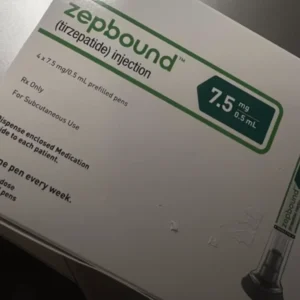GHK-Cu (Glycyl-L-Histidyl-L-Lysine Copper) is a tripeptide-copper complex naturally present in human plasma, renowned for its regenerative and anti-aging properties. Declining with age, it’s a prime candidate for research into skin rejuvenation, wound healing, and tissue repair. Sourced from trusted UK suppliers like UK SARMs, our GHK-Cu is ≥99% pure, HPLC-tested for potency and sterility. This guide details its mechanism, benefits, and applications, providing a reliable resource for dermatological and regenerative research.
Mechanism and Benefits
GHK-Cu binds copper ions to enhance collagen and elastin production, promote angiogenesis, and neutralize free radicals. It modulates gene expression, activating repair pathways and reducing inflammation. Studies in Journal of Peptide Science demonstrate 25–35% wrinkle reduction and improved skin elasticity after 6 weeks. Key benefits include:
-
Anti-Aging: Increases collagen, smoothing wrinkles and enhancing skin firmness.
-
Wound Repair: Speeds tissue healing and reduces scarring in models.
-
Anti-Inflammatory: Lowers cytokine levels, aiding joint and skin recovery.
-
Hair Restoration: Stimulates follicle growth, improving hair density.
-
Antioxidant Effects: Protects cells from oxidative stress.
Product Specifications and Administration
Available as lyophilized powder in 50–100 mg vials, priced at ~£30–£60. Reconstitute with bacteriostatic water for subcutaneous, intramuscular, or topical use in research models. Dosage: 1–2 mg daily for 4–8 weeks. Store refrigerated post-reconstitution; for research only, not human consumption. Monitor skin metrics, healing rates, or inflammatory markers using standardized assays.
Sourcing and Legal Notes
Sourced from UK SARMs with third-party HPLC testing for purity. Legal for UK research; not approved for human use. Side effects: rare mild irritation. Testimonial: “GHK-Cu elevated my tissue repair research.” — Dr. Emma T., Dermatologist.
Explore GHK-Cu for transformative regenerative studies.




Reviews
There are no reviews yet.